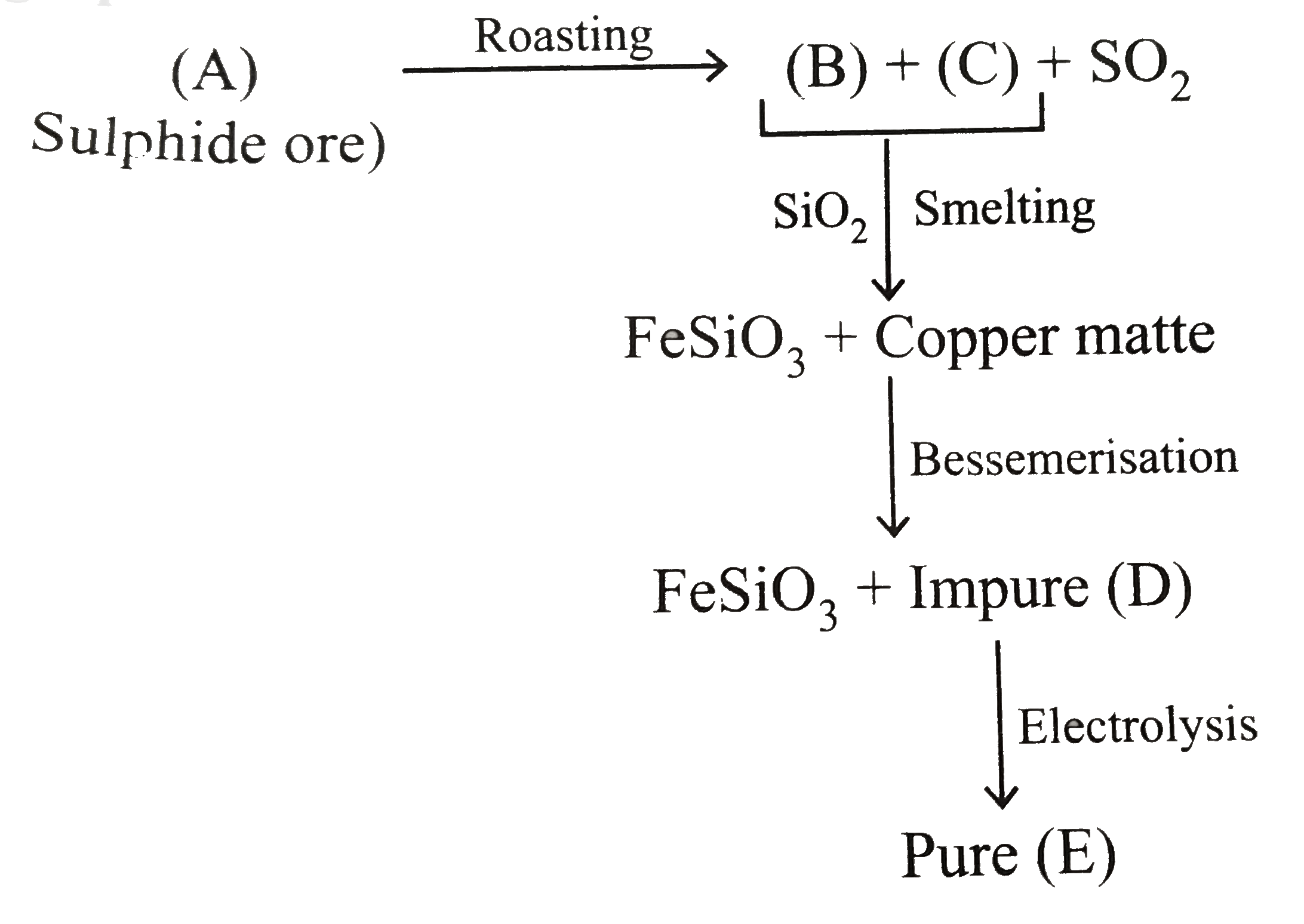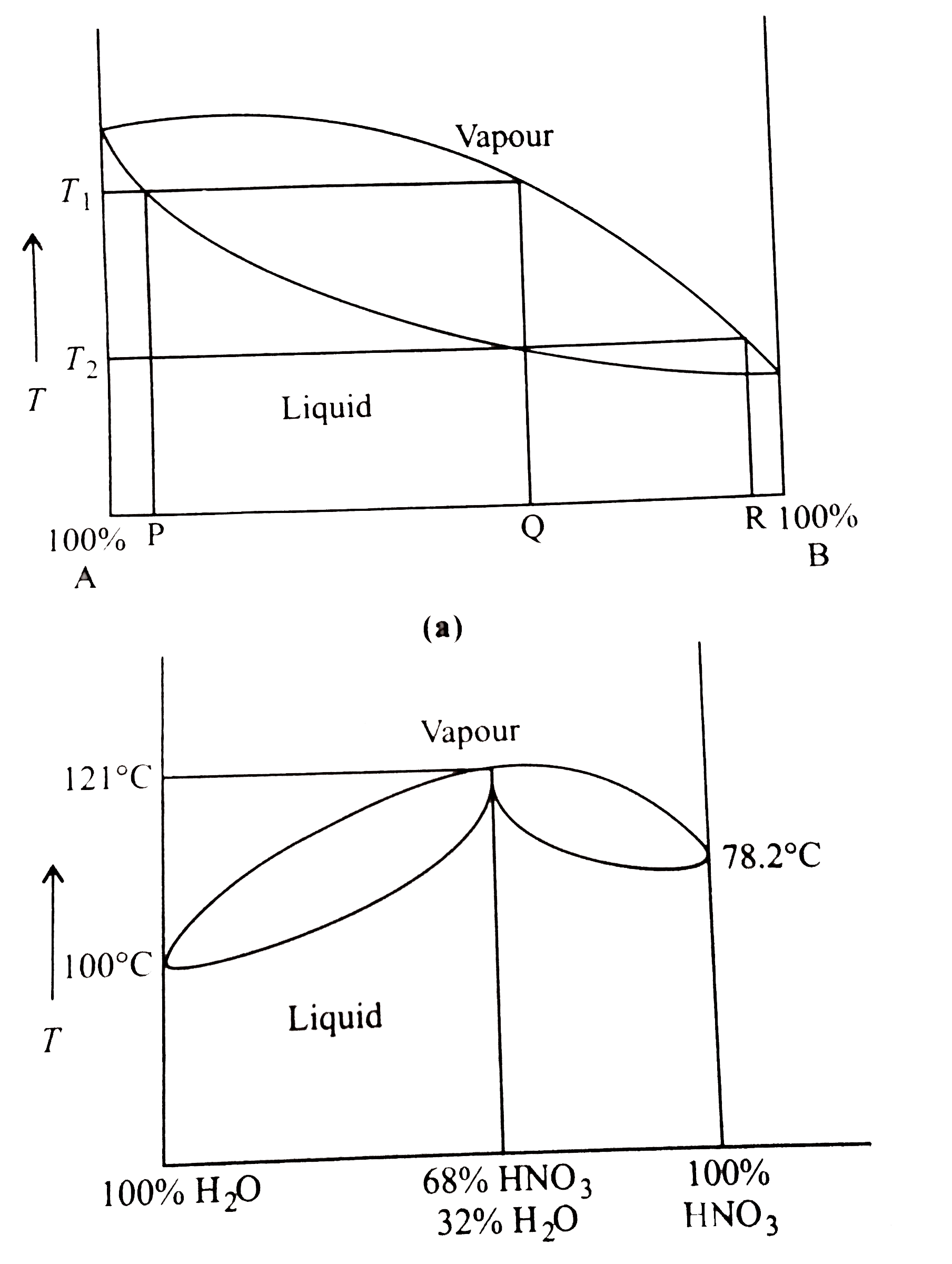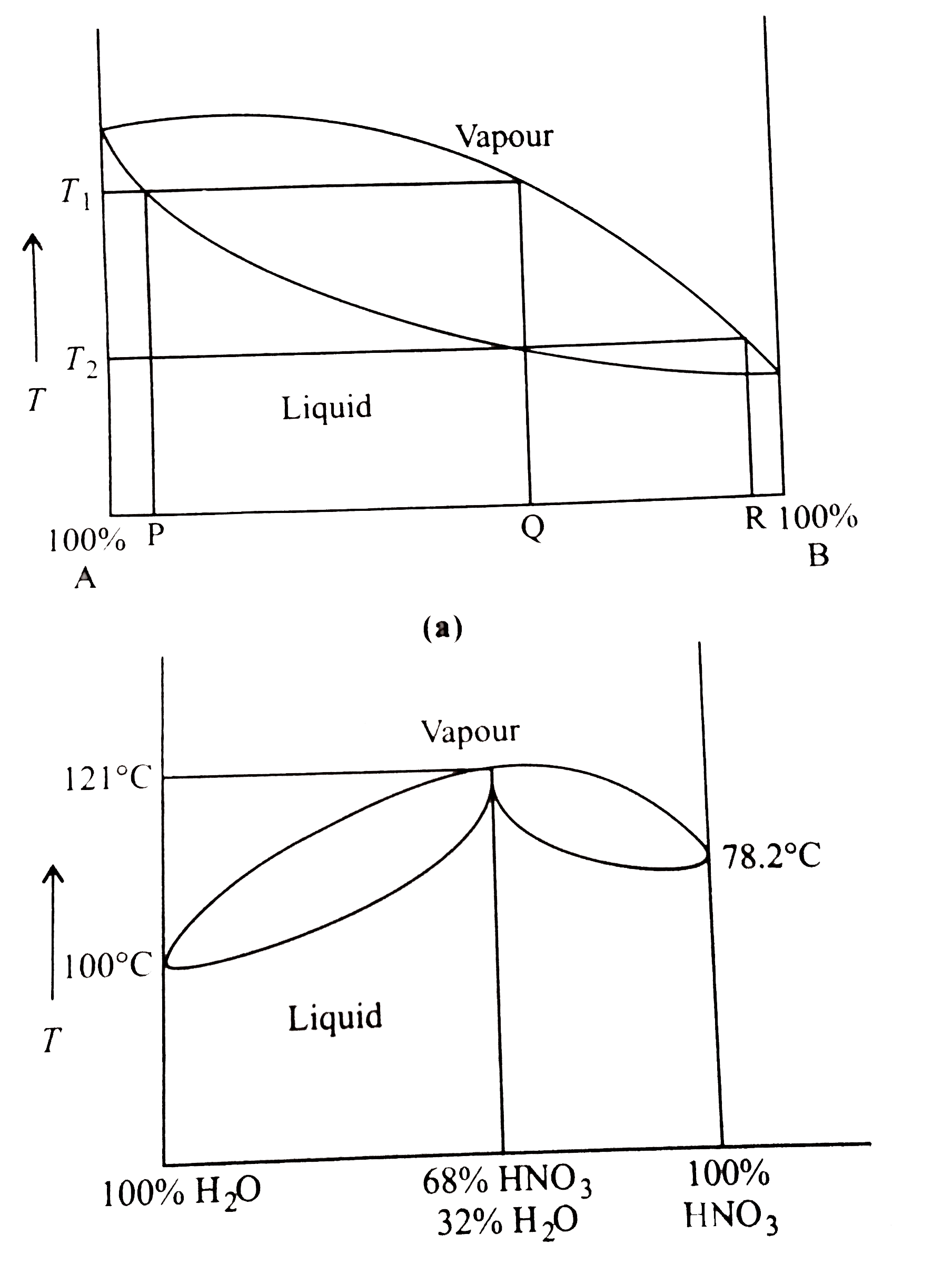
Pure (E) is
Cu
Fe
S
O2
The correct Answer is:A
2CuFeS2+O2(A)Roasting−−−−→Cu2S+2FeS+SO2
Cu2S and FeS are further partially oxidised.
2Cu2S+3O2→2Cu2O+2SO2
2FeS+3O2→2FeO+2SO2
At iron is more reactive than copper, FeS is preferentially oxidised to FeO than Cu2S to Cu2O. If at all any Cu2O is formed, it reacts with FeS to give Cu2S again.
Cu2O+FeS→Cu2S+FeO
Hence, (B) and (C) are FeO and Cu2S.
On smelting (B)+(C), i.e., heating with SiO2 (flux) and soem powdered coke, FeO combines with silica to form fusible ferrous silicate slag.
FeO+SiO2→FeSiO3Ferrous silicate (slag)
Slag being lighter, floats on the lower layer which comprises of copper matte. Copper matte mainly consists of Cu2S and some unchanged FeS.
Copper matte is separated from slag, and on electrolysis gives pure Cu metal. Hence,
Pure (D) is Cu metal.
Topper's Solved these Questions
- BOOK - CENGAGE CHEMISTRY ENGLISHCHAPTER - GENERAL PRINCIPLES AND PROCESS OF ISOLATION OF ELEMENTSEXERCISE - Exercise (Multiple Correct)43videos
GENERAL PRINCIPLES AND PROCESS OF ISOLATION OF ELEMENTS
- BOOK - CENGAGE CHEMISTRY ENGLISHCHAPTER - GENERAL PRINCIPLES AND PROCESS OF ISOLATION OF ELEMENTSEXERCISE - Exercise (Single Correcttype)106videos
GENERAL PRINCIPLES AND PROCESS OF ISOLATION OF ELEMENTS
- BOOK - CENGAGE CHEMISTRY ENGLISHCHAPTER - GENERAL PRINCIPLES AND PROCESS OF ISOLATION OF ELEMENTSEXERCISE - Exs 1.1 (True Orfalse Statement)19videos
GENERAL PRINCIPLES AND PROCESS OF ISOLATION OF ELEMENTS
- BOOK - CENGAGE CHEMISTRY ENGLISHCHAPTER - ELECTROCHEMISTRYEXERCISE - Archieves Subjective35videos
ELECTROCHEMISTRY
- BOOK - CENGAGE CHEMISTRY ENGLISHCHAPTER - GRIGNARD REAGENTS AND ORGANOMETALLIC REAGENTSEXERCISE - Exercises Archives (Linked Comprehension)1videos
GRIGNARD REAGENTS AND ORGANOMETALLIC REAGENTS
Similar Questions
Pure H2O2 is
View Solutionrepresents the distillation of mixture of liquid A and liquid B which gives both of pure liquid A and B . Represents the azeotropic mixture of HNO3 and H2O which distillation gives an azeotropic mixture and either of pure liquid. We cannot separate both the pure liquid, i.e., H2O and HNO3.
What is the result of distilling a mixture of 80%HNO3 and 20%H2O?
(a)Pure H2O and azeotropic mixture can be separated.
(b)Pure H2O and pure HNO3 can be separated.
(c)Pure HNO3 and azeotropic mixture can be separated.
(d)None of theseView Solutionrepresents the distillation of mixture of liquid A and liquid B which gives both of pure liquid A and B . Represents the azeotropic mixture of HNO3 and H2O which distillation gives an azeotropic mixture and either of pure liquid. We cannot separate both the pure liquid, i.e., H2O and HNO3.

What is the result of distilling a mixture of 50%HNO3 and 50%H(2)O ?
a.Pure water and azeotropic mixtue can be separated.
b.Pure H2O and pure HNO3 can be separated.
c.Pure HNO3 and azeotropic mixture can be separated.
d.None of theseView SolutionThe pH of pure water is 7. Compare the pH of
ammonia solution with that of pure water.View SolutionPure aniline is a :
View SolutionThe contact angle between pure water and pure sliver is 90∘ If a capillary tube made of silver is dipped at one end in pure water, will the water rise in the capillary?
View SolutionDPD of pure water is zero.
View SolutionOsmotic potential of pure water is
View SolutionThe water potential of pure water is
View SolutionMolarity of pure water is
View Solution
